7 Fascinating NC Arthropods (That You’ve Never Heard Of)
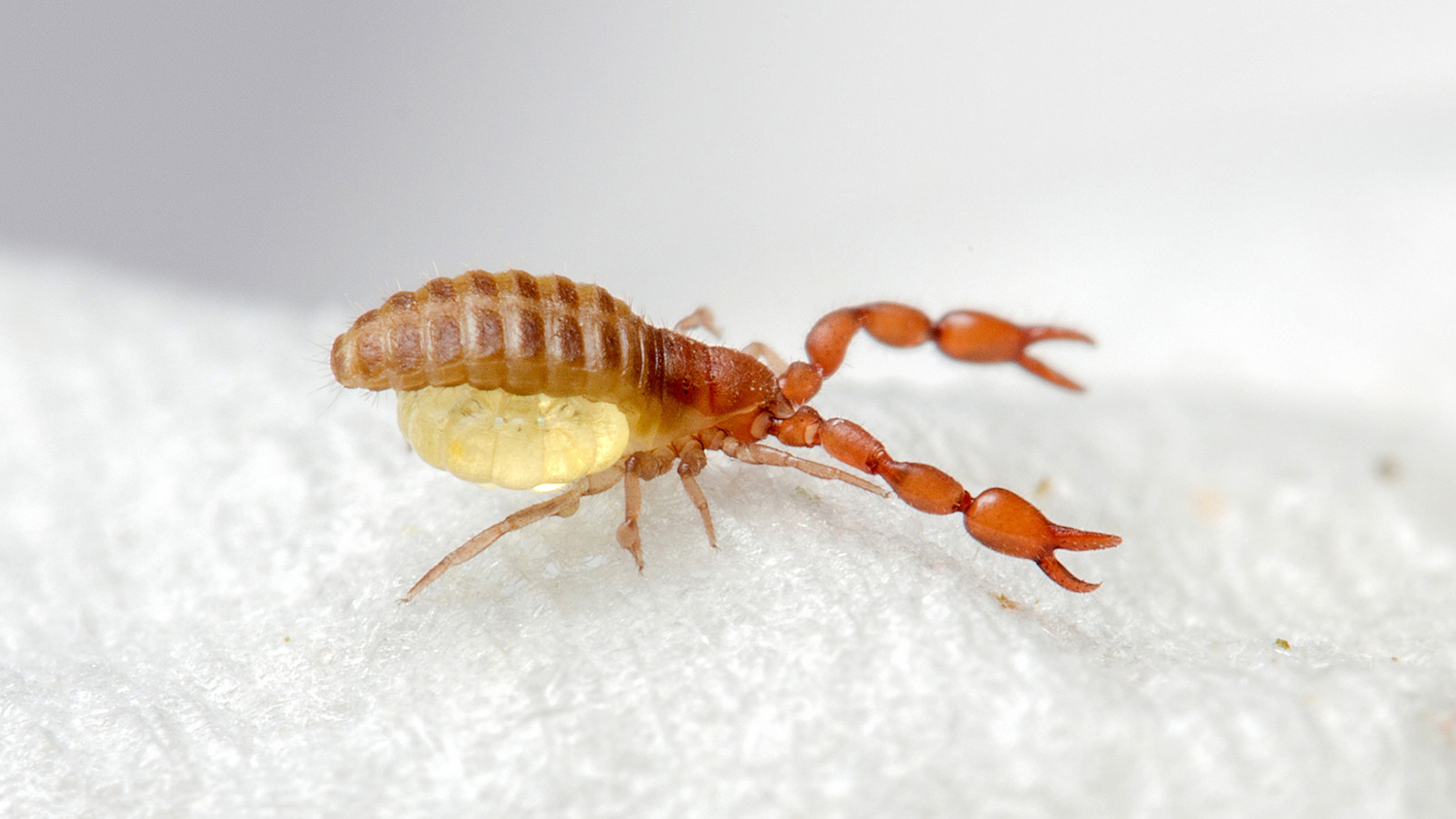
Editor’s Note: This is a guest post by Matt Bertone, an entomologist and extension associate at NC State. This post is part of our NC Knowledge List series, which taps into NC State’s expertise on all things North Carolina.
Some insects and their relatives (called “arthropods”) are so common, large and/or showy that you can’t help but notice them. That’s why most people are familiar with bees, ants, flies (including mosquitoes), ladybugs, orbweaver spiders, and dragonflies. But have you ever heard of a thrips? Or perhaps a duff millipede?
Although some of these arthropods are generally unknown due to their small size, others are simply uncommon, so you can’t blame yourself for not knowing them. But they still exist and many of these can be found right outside your door – all it takes is a little adventure and, perhaps, a magnifying glass.
Bark Lice
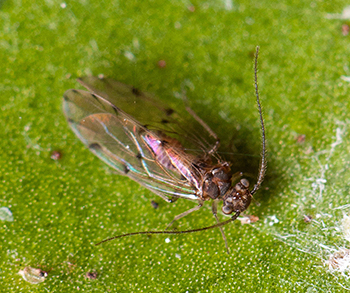
The word “lice” may get your scalp itching, but these lice are only distant relatives of the blood-feeding sort – in fact, until recently they were regarded as separate groups (recent evidence has found that the parasitic species evolved from free-living forms). That said, bark lice are (as the name suggests) often found on the bark of trees. These little, aphid-like insects graze on algae, spores, pollen and other organic matter from the surfaces of leaves and bark, which is why they are so common. They can also “drink” water straight from the atmosphere, which helps them survive in many places.
Most bark lice have a characteristic bulging face and large eyes. Some even look like tiny moths, complete with scaly wings. Bark lice are an interesting group: many exhibit parental care by guarding their eggs, spin silk (sometimes in large quantities), and congregate in “herds” for protection (these are sometimes called “tree cattle”). Some even have beautifully sculptured eggs. If you want to find one, the best place to look is on the undersides of holly or camellia leaves.
Thrips
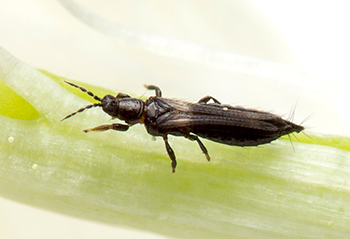
Thrips (the name is both singular and plural, like fish or deer) represent an extremely diverse group of insects that is often overlooked, but is important to humans. Although small, you can find thrips on just about any flower you find – thrash the flower hard on some paper and you’ll dislodge some. Thrips have piercing/sucking mouthparts, but only one of their mandibles is developed (the left one in case you are curious). This feature along with thin, strap-like wings with a fringe of setae and bladder-like structures on the ends of their feet help define the group.
You might have a hard time seeing those features, though, because most thrips are less than 2 millimeters (mm) long. These insects are diverse (over 5,000 species in the world) and have a variety of interesting habits. Most feed on plants, but some feed on fungi or are predators of other small arthropods. Although they don’t have complete metamorphosis like butterflies and beetles, they do have two to three resting “pupal” stages in between feeding “larval” and adult stages. Several species are major plant pests, either by causing direct damage or by transmitting plant viruses (the most famous example being tomato spotted wilt virus, or TSWV). Some thrips in the Old World make galls and are eusocial like ants or bees – complete with a queen, soldiers and other types in the colony. Oh, and some species look like tiny body builders with giant front legs!
Oribatid Mites
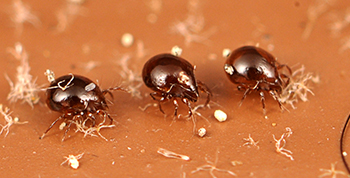
Mites are small to microscopic arachnids that most people don’t notice. But when you get down close to the soil, under rotting logs or on the bark of trees, you’ll find a huge diversity of these critters. Among the most common are the beetle or armored mites, often called oribatid mites. These little tanks are all over the place, especially where organic matter and fungus is abundant. In fact, tens of thousands of individuals can be found in one square foot of soil!
Most species feed on microscopic organisms or decaying mater, but they have been known to feed on nematode worms and sometimes plants. Oribatid mites are generally slow moving and slow growing – many take more than two years to mature. When they do mature, they often either reproduce through external means (males lay a sperm packet) or exist as populations of only females who reproduce asexually. Although usually not important to humans, they are known to transmit tapeworms to livestock after being eaten on grass.
Pseudoscorpions
Other small arachnids you may find while searching for mites are pseudoscorpions. As their name suggests, these creatures are not true scorpions; they do not have a sting-tipped tail, but do have claws (as you can see in the photo at the top of this page). That’s not to say they don’t have venom – many have venom that is delivered through the tips of their claws. This venom is used to overpower small prey that make up their diet. No need to fear these creatures, though, as most pseudoscorpions are less than 1/8 of an inch long and are not dangerous.
In an interesting twist, some tropical pseudoscorpions have been found to hunt larger prey in packs of up to 175 individuals. That sounds a little more terrifying, but pseudoscorpions have a more loving side. Reproduction occurs when the male and female pseudoscorpions dance, claws interlocked, and eventually the male lays a pack of sperm and the female dances over it. When the mother pseudoscorpion is ready to give birth, she lays eggs inside a pouch (see the inset photo) and may even wrap herself in a silken nest (the silk is produced by her mouthparts). Pseudoscorpions are all over the place, helped by hitching rides on larger organisms, but are most often found in humid environments, such as the soil and under the bark of rotten logs.
Duff Millipedes
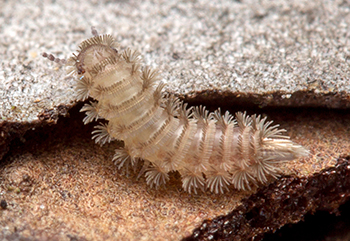
No, these creatures are not named after the fictional beer on The Simpsons, but I’m not sure where the name actually originated. Regardless, they are super cute and make up a strange branch on the family tree of millipedes. Duff millipedes are often found in soil, leaf litter, or in rotting wood where they graze on fungus and other organic materials. They are small – only a few millimeters long – but easily identified by their fuzzy body.
There’s a reason for their hairs: they are barbed and break of in the mouths of predators, acting as an effective defense. This works well, except when some ants evolve ways to shave these millipedes using specialized mandibles. You’re only likely to find these critters by searching their habitat, but sometimes they come to you. On occasion, there are mass migrations of duff millipedes into homes, becoming a temporary nuisance.
Beaded Lacewings
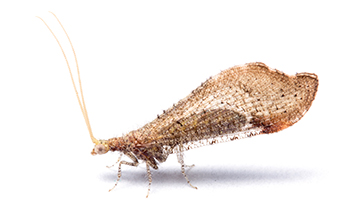
Green and brown lacewings can be common around outdoor lights in NC, but their cousins, the beaded lacewings, are less likely to be seen. That doesn’t mean they aren’t interesting. Adult beaded lacewings are somewhat typical for their group, but have long, scalloped wings and thick antennae. However, it’s not the adults that are fascinating, but their larvae.
Larval beaded lacewings live exclusively in the nests of subterranean termites (Reticulitermes sp.) where they are predators of the workers. These larvae are often much smaller than their prey, but they’ve got a trick up their sleeve – or, rather, up their anus! Beaded lacewing larvae produce a potent toxin out of their rear that incapacitates termites that are within range. The larval lacewing is then able to approach its unconscious prey and suck it dry without much hassle. Apparently only termites of certain sizes succumb to the toxic discharge, while other insects are unaffected. For more on this read Gwen Pearson’s wonderful article on these beasts and check out some very rare and beautiful photos from Japan of a larva in action.
Telephone-Pole Beetles
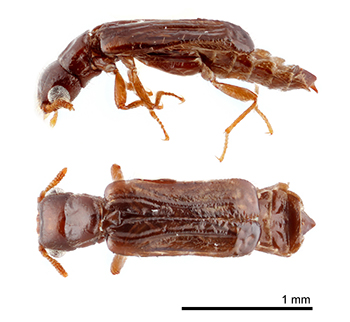
Rotten logs in North Carolina are home to a tiny beetle that has perhaps the strangest life cycle of any animal. Although small, brown, and fairly unremarkable in appearance, the telephone-pole beetle (Micromalthus debilis) represents an ancient lineage of beetles. The group is old, but even more interesting is the fact that the species itself appears not to have changed for 15 to 20 million years! Larvae develop in rotting wood and undergo a pretty complicated development (adorably illustrated by Ainsley Seago here).
The first thing to know is the larvae can reproduce – yes, their babies can have babies. They take various routes to becoming an adult, but often cycle through larvae of different forms. When they do become adults, they are almost always female. Males are known, but only come about through a gruesome act. Namely, a larva will lay a single egg that hatches and then attaches to its mother larva, whom it eats (known as “matriphagy”). After that it can become a male and go off and mate with a female. For some more pics of these interesting beetles, see this Tree of Life series by Alex Wild.
These are just a few of the amazing arthropods found in North Carolina. If you take the time to explore our outdoors, you might just find more!
- Categories:


